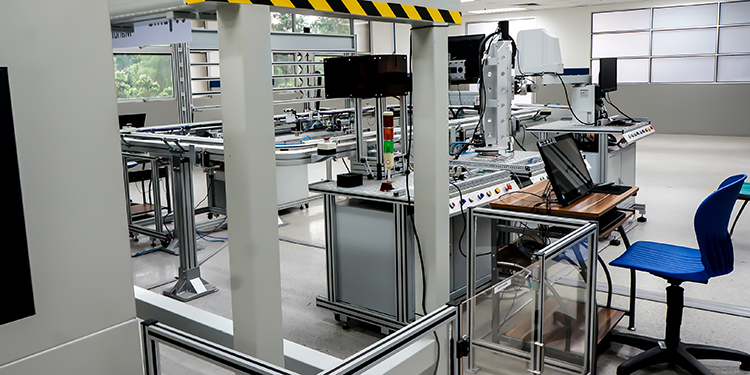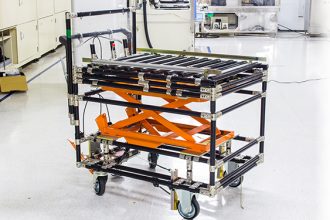For Safer Handling Change These Four Manual Work Practices

Although automation is increasingly appearing throughout supply chains, hand laborers and material movers performing manual tasks still fill the majority of warehousing, distribution, and fulfillment jobs. Indeed, an average of 1.06 million openings for these positions will be available annually over the coming decade, according to the U.S. Bureau of Labor Statistics. Yet overexertion associated with excessive physical effort and repetitive motion — the hallmarks of the position — remains among the most prevalent causes of work-related injuries. Whether using automation or not, creating a safer handling environment is imperative in order to reduce the risk of worker injury. Here we explore four manual work practices that operations can change to do just that.
1. Build Variety into Jobs
One of the easiest ways to create a safer handling environment is to break up the repetitive nature of most manual tasks. The objective is to vary each associate’s job, so they differ in myriad ways such as:
- Muscles or body parts used
- Working postures
- Amount of repetition
- Work pace
- Amount of physical exertion required
- Visual and mental demands
- Environmental conditions

For example, many operations require a series of steps to complete a process. Instead of assigning one worker to perform the same task throughout an entire shift — such as unboxing received items — rotate several associates through multiple different tasks on a regular schedule. This might be every hour, after breaks, or at another interval that makes sense. The point is to create opportunities for workers to use different muscle groups and perform different activities throughout the day. This reduces fatigue, as well as injury risk. It also minimizes boredom while upskilling workers through cross-training.
An additional approach is to adjust each worker’s physical position as much as possible. If they stand for a long period of time, shift them to a seated task. Or, if they’re working at an adjustable height workstation, raise or lower the surface periodically to prompt them to change their position. This adjustment engages different muscle groups, which minimizes the chance of injury.
2. Adjust Work Schedules and Work Pace
New employees or workers transitioning to a new task will likely need time to adjust to the physical demands of the job. Further, those who are returning from long absences often need to ease back into their previous routines. In all of these cases, for safer handling modify work schedules accordingly, and gradually introduce a normal work pace to minimize the risk of overexertion.

3. Provide Recovery Time
Building in rest and recovery periods throughout a labor-intensive assignment helps to prevent fatigue and musculoskeletal injuries. Institute short breaks to reduce the frequency and duration of physically demanding tasks. While it might seem counterintuitive to productivity goals, a rested and uninjured workforce is far more productive than one that is tired and hurting.
Employees will likely have ideas or suggestions for optimal break or rotation schedules to help minimize the physical impact of their jobs. Be sure to solicit their opinions as part of your process when developing safer handling practices.
4. Modify Work Practices
Continuously observe how workers are performing their jobs to identify repetitive movement or overexertion scenarios. Encourage associates to be comfortable, change positions, and stretch during work periods. Also, train employees to perform work in midrange postures within their power zone.
Midrange postures are those in which the joints — such as neck, back, legs, arms, and wrists — are bent in comfortable, natural angles. The power zone is above the knees, below the shoulders, and close to the body. Working within their power zone is a safer handling practice as it gives an associate the ability to complete heavier tasks with less bending, stooping, or reaching.

Get More Guidance on Safer Handling Practices for Manual Operations
For operations that need more guidance on improving their manual practices for safer handling, “Ergonomic Guidelines for Manual Material Handling” is available. Produced by the Ergonomic Assist Systems & Equipment (EASE) Council of MHI, the National Institute for Occupational Safety and Health (NIOSH), and the California Division of Occupational Safety and Health (Cal/OSHA), the publication is free.
Downloadable, this workplace safety handbook includes additional details about ways to improve ergonomics by changing manual work practices. It also offers:
- Guidelines for safer manual load carrying.
- Recommendations for using equipment safely to reduce worker injury risks.
- A comprehensive framework for developing a proactive ergonomics improvement action plan.
Need more ideas for ways to minimize the risk of employee injuries and improve workplace safety by incorporating safer handling practices? The members of the Ergonomic Assist Systems & Equipment (EASE) Council of MHI are always available to consult, answer questions, and make recommendations. Learn more about EASE.



